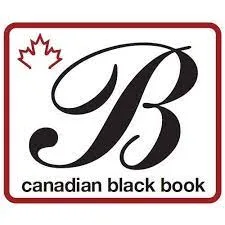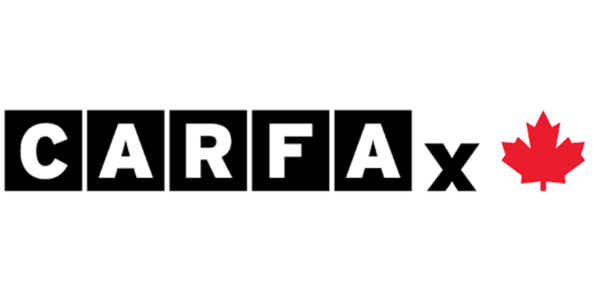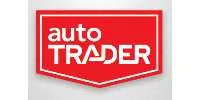Trading in your car involves bringing your current vehicle to a dealership for a new one. Instead of paying for the new car in full, the dealer subtracts the trade-in value from the price tag. Like with most aspects of car buying, there’s some wiggle room to maximize how much you can get when you trade in your car.
How to trade in your car in 6 steps
Technically, all you need to do to trade in your car is bring it to a dealership, pick a new car and sign the paperwork. But you probably won’t get the best trade-in value. These steps can help ensure you don’t go into a trade-in blind and get a raw deal.
Step 1: Get an estimate of your car’s value
Start by getting an estimate of your car’s trade-in value online so you have a number in your head. Be prepared to have the following information on hand to get an accurate estimate. If your car’s been damaged in any way, you might want to take it to a mechanic to get it appraised, since its value might have been affected.
- Kilometres
- Model, model, trim
- Condition level
- Your postal code
Below is a list of some of the most popular car value estimator sites in Canada and what factors they use to calculate your car’s value before the trade in.
| Car-value estimator | How it works |
|---|---|
 |
|
 |
|
 |
|
 |
|
Step 2: Calculate your equity
Already own your car outright? You can skip this step. If you’re still paying off your loan but want to trade in your car, find out if you have positive or negative equity by subtracting your loan balance from the trade-in value.
If you get a positive number, that means you have positive equity and might be able to get a better deal when you trade it in.
Step 3: Gather your documents
Dealerships typically ask to see several documents when giving you a quote, including:
- Car title
- Car registration
- Loan payoff amount
- Loan account number
- Driver’s license
You also might need to bring all of the keys you have for the vehicle you want to trade in.
Step 4: Get quotes from a few dealerships
Do some research on dealerships in your area and schedule an appointment. Some dealerships might be able to give you a quote for your car’s trade in value over the phone or by email, while others might insist you bring in the car.
When you bring in your car, a used car manager will examine the vehicle before coming up with a quote. Even if a deal sounds good, don’t sign any paperwork until you’ve heard from other dealerships. Consider starting with a dealership that allows you to hold on to your offer while you shop around.
Step 5: Negotiate with your chosen dealership
Use the different car trade in quotes you received to negotiate a better deal at your chosen dealership. But don’t ignore the cost of your new car.
Research the value of each car you’re considering buying with your trade-in and use that to negotiate down the cost. Check out these tips for buying a new car which can help you make a smarter decision. If you think a dealership isn’t giving you a fair price on a used car, consider having the vehicle appraised by an independent third party.
Step 6: Close on your trade-in
How this step works can differ depending on whether you own the car or still owe money on it. If you own the car, trading it in is relatively straightforward. The dealer subtracts your current car’s value from the new car and you pay the difference. Or if you’re buying a car that costs less than the trade-in price, the dealer writes you a check.
What happens when you have a car loan depends on whether you have positive or negative equity. If your car’s trade-in value is worth more than your car loan balance, the dealer deducts the difference from the price of the new car.
If you have negative equity, you’re responsible for covering the difference between your loan balance and the trade-in price. You might be able to roll the negative equity into a new car loan, but that adds to the risk of going underwater on your next car loan. Pay it off in cash if possible to avoid an upside-down car loan.
Three tips for negotiating a good trade-in deal
Ready to trade in your car for a new one? Follow these pointers to get the best deal out there:
- Brush up on your sales tactics. Go into the dealership with an idea of what to expect so you don’t walk away convinced your car is worth less than it actually is.
- Negotiate the new car price first. Focusing on the price of the new car you want to buy can help you hone in on the difficult part before tackling the trade-in deal.
- Time it right. Dealers are often more flexible at the end of the month or year, when they’re trying to move cars off the lot.
How to trade in a car that is not paid off
If you want to trade in a car that you haven’t finished paying off yet, the dealership will evaluate how much your car is worth and apply any positive difference between your car’s value and your loan amount as a deduction on your new vehicle’s price. If it turns out that you owe more on your car than it’s worth, you’ll have to pay the remaining amount on your old car loan and you won’t get a discount on a new vehicle from the dealership.
How to roll over a car loan
If you still owe money on your old car loan, dealerships often suggest rolling over your old loan into whatever financing you secure to purchase your next car. While it can seem convenient to not have to pay off your old car before buying a new one, it also adds to the total amount you’ll need to pay back on your next loan. That can lead to getting into more debt than you can manage.
Instead of trading in a car and rolling over your car loan into a new loan, it might be worth waiting to trade in your car until you’ve fully paid off your car loan. Alternatively, you can look into selling your car privately instead of trading it in. You can often get more money for your car in a private sale than you could get when you trade it in at a dealership.
Sell or trade-in your car online
Should I trade in my car?
Trading in your car takes a lot less time than selling it yourself. You won’t have to take it in for inspections, advertise it or make time to have prospective buyers test-drive it.
You also might be able to avoid paying sales tax on your new car, depending on where you live. Or you might only have to pay sales tax on the difference between your new car’s value and your old one’s.
Should I sell it to a private buyer instead?
If you want to get the most money for your vehicle, selling it to a private buyer might be a better choice compared to trading it in. Dealers tend to buy trade-in cars at wholesale value, which is less than the sticker price you’d get from a private-party purchase. If you’re not a skilled negotiator, your dealership could even pay you less than that wholesale price.
Ready to finance your next car after a trade in? Compare car loan options
Finder Score for car loans
To make comparing even easier, we came up with the Finder Score. Interest rates, fees and features across 20+ car loans are all weighted and scaled to produce a score out of 10. The higher the score the better the loan—simple.
Bottom line
Taking the right steps when you trade in your car can help ensure you get a fair deal. But if you’re looking to maximize profits, consider selling it privately instead.
You can learn more about how car financing works with our guide to auto loans.
Frequently asked questions how to trade in a car
More guides on Finder
-
Best used cars to buy in Canada
Shopping for a used car to buy in Canada? Check out these 12 options to suit any budget.
-
10 best cars under $30k in Canada
Buying on a budget? These are the best new cars for $30k or less in Canada.
-
Best cars to buy in Canada
Whether you want a small car, a family sedan or a luxury SUV, these are the best cars to buy in Canada.
-
How much is the average car payment in Canada?
Looking to buy a new car? Find out how much Canadians will typically spend on car payments.
-
Best car-buying apps in Canada
Your guide to the best apps and sites to help you buy a car in Canada.
-
7 steps for importing a car into Canada
Looking to import a car into Canada? Find out what steps you’ll need to take and what barriers you might face.
-
Best cars under $25k in Canada
No matter what you’re looking for in a vehicle, these are the best budget cars in Canada.
-
Fees and charges when buying a new or used car in Canada
Find about the fees and charges you need to pay on top of the MSRP when buying a car.
-
How to buy and finance a Tesla in Canada
Most cars are an investment, but none so much as a Tesla. If you’re looking at purchasing one, this guide will show you how to find the best model for you and how to make your purchase.
-
How much car can I afford?
Learn how to calculate how much car you can afford based on your salary and budget.

